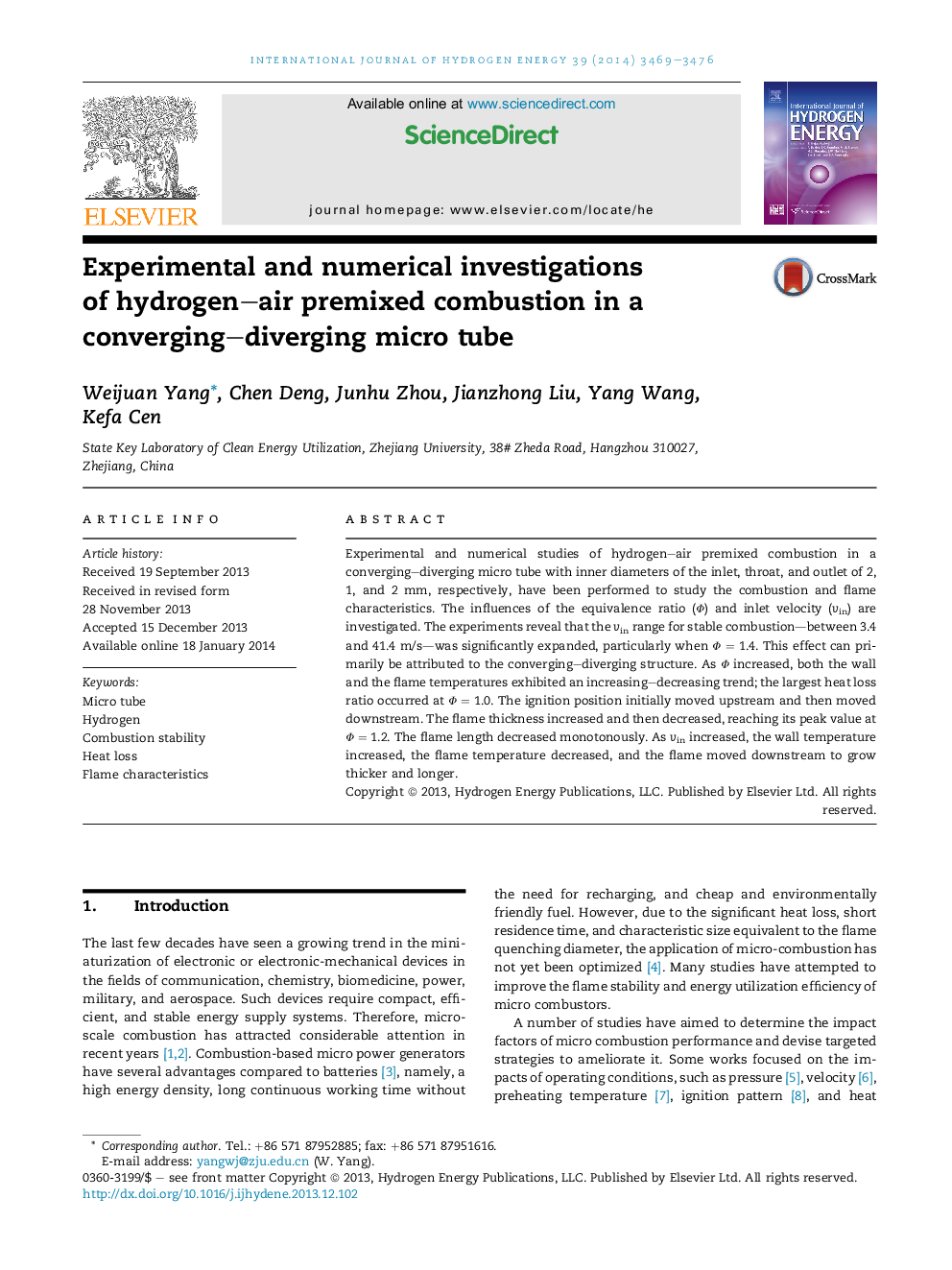| Article ID | Journal | Published Year | Pages | File Type |
|---|---|---|---|---|
| 1270652 | International Journal of Hydrogen Energy | 2014 | 8 Pages |
•H2/air premixed micro combustion was studied by experiments and simulation.•Structure of converging–diverging expanded the stable combustion limits.•Temperature, ignition position, and flame characteristics were studied.•Effects of equivalence ratio and inlet velocity were discussed.
Experimental and numerical studies of hydrogen–air premixed combustion in a converging–diverging micro tube with inner diameters of the inlet, throat, and outlet of 2, 1, and 2 mm, respectively, have been performed to study the combustion and flame characteristics. The influences of the equivalence ratio (Φ) and inlet velocity (vin) are investigated. The experiments reveal that the vin range for stable combustion—between 3.4 and 41.4 m/s—was significantly expanded, particularly when Φ = 1.4. This effect can primarily be attributed to the converging–diverging structure. As Φ increased, both the wall and the flame temperatures exhibited an increasing–decreasing trend; the largest heat loss ratio occurred at Φ = 1.0. The ignition position initially moved upstream and then moved downstream. The flame thickness increased and then decreased, reaching its peak value at Φ = 1.2. The flame length decreased monotonously. As vin increased, the wall temperature increased, the flame temperature decreased, and the flame moved downstream to grow thicker and longer.
